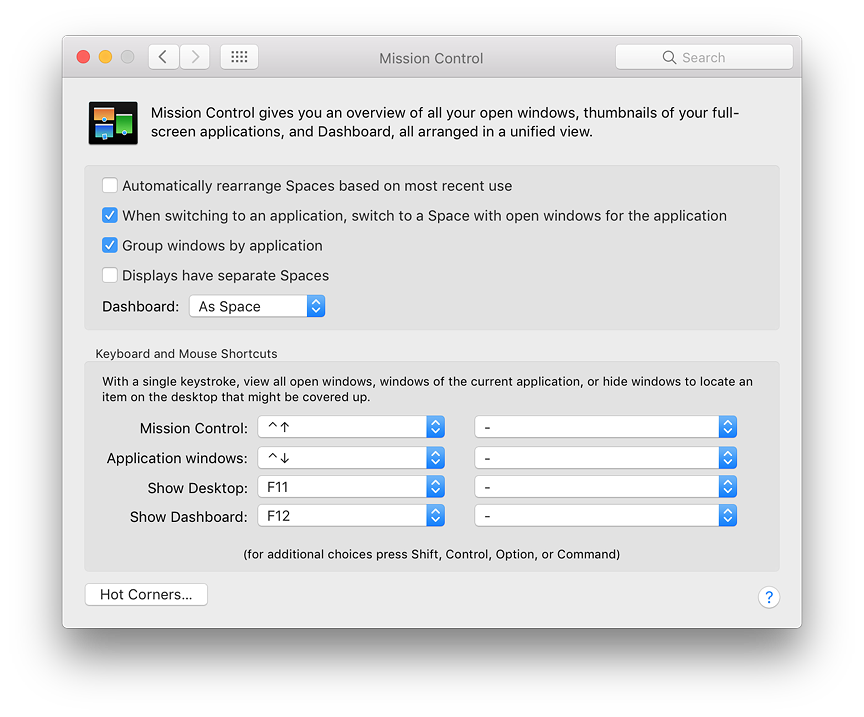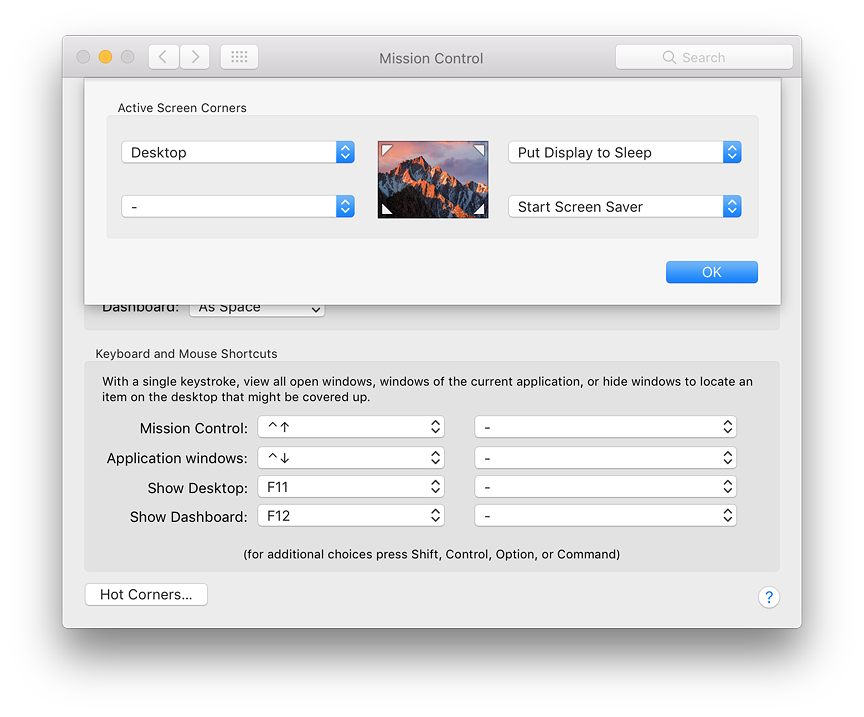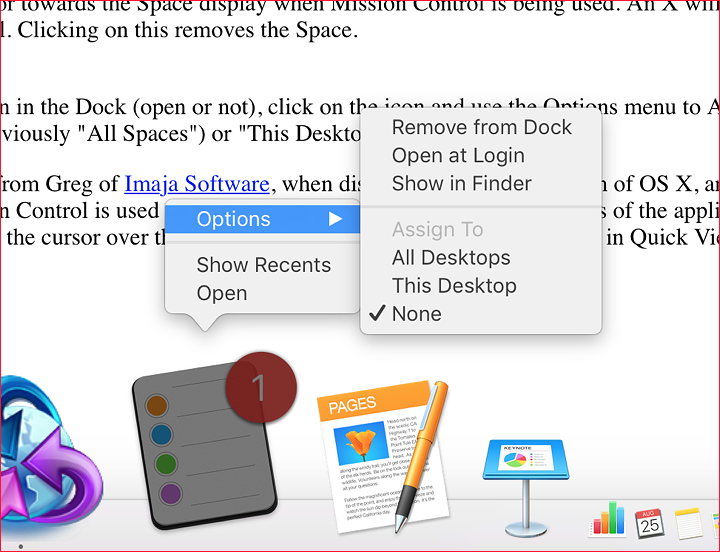System Preferences in macOS, Sierra: Mission Control

eXtensions - Friday 30 September 2016
|
System Preferences in macOS, Sierra: Mission Control |
 |
|
|
By Graham K. Rogers

Mission ControlMission Control can be activated in three ways: by using its icon in the Dock; using gestures (see Trackpad Preferences); or via Key Commands. There are four checkboxes for activating features with Mission Control:

Keyboard and Mouse ShortcutsWithin the Mission Control Panel, users may allocate specific keys for some of the operations. Four operations are available, with eight buttons shown in two columns. The first column is for key commands; the second for mouse controls:
When clicked, each button in the first column reveals a list of keys which may be used to reallocate the command. For example, instead of the default F9 for Mission Control, we may choose Right Shift. In my case, I have allocated the key combination of Control + Up Arrow. When selecting a key, pressing on a modifier key (e.g. Control) adds that to the command. Re-allocation takes affect immediately. If a key (or combination) is used that conflicts with other operations, or previously allocated commands, a yellow warning triangle is displayed alongside the button.
If any of the control keys (Shift, Control, Option, Command) are pressed - alone or in combination - these also appear in the menu. They are accepted (or removed) by clicking the mouse.
Hot CornersSpecific actions may be allocated to any of the four corners of the screen in the same was as in the Desktop & Screensaver Preferences. As the cursor moves to the corner, an action is carried out. Options available are Mission Control, Application Windows, Desktop, Dashboard, Notification Center, Launchpad, Start Screensaver, Disable Screensaver, Put Display to Sleep and - (no action).

NotesMission Control manages Spaces. On new installations there is a single Space (plus Dashboard). On Macs that have used Spaces before, the same number is available after an update.New Spaces can be added when Mission Control is being used - click the icon in the Dock - by moving the cursor towards the top right of the screen. A new, semi-transparent Space appears (using the desktop image from Space 1). By clicking in that new Space, it becomes active and is allocated a consecutive number (e.g. Desktop 7). This then also appears in Key Commands. To remove a Space, slide the cursor towards the Space display when Mission Control is being used. An X will appear at the top left of the Space thumbnail. Clicking on this removes the Space.

As pointed out to me in an email from Greg of Imaja Software, another useful feature is that when Mission Control is used to view all open windows, the miniature views of the application panels can be enlarged by moving the cursor over the specific pane and pressing the space bar (as in Quick View).
See Also:
Graham K. Rogers teaches at the Faculty of Engineering, Mahidol University in Thailand. He wrote in the Bangkok Post, Database supplement on IT subjects. For the last seven years of Database he wrote a column on Apple and Macs. He is now continuing that in the Bangkok Post supplement, Life. He can be followed on Twitter (@extensions_th) |
|

For further information, e-mail to

|